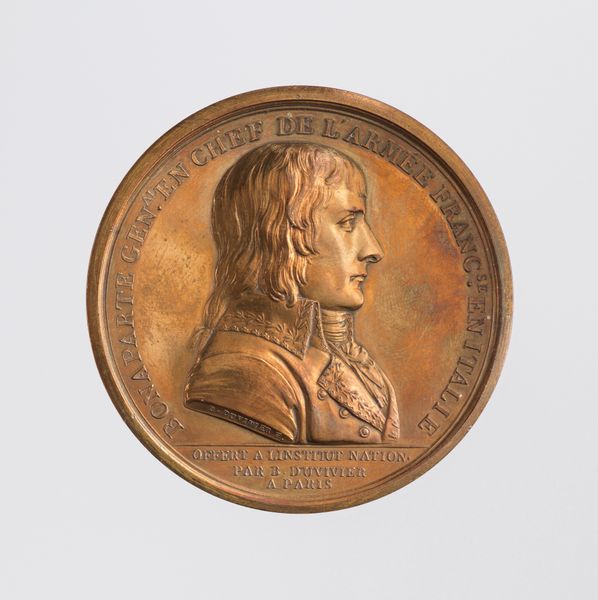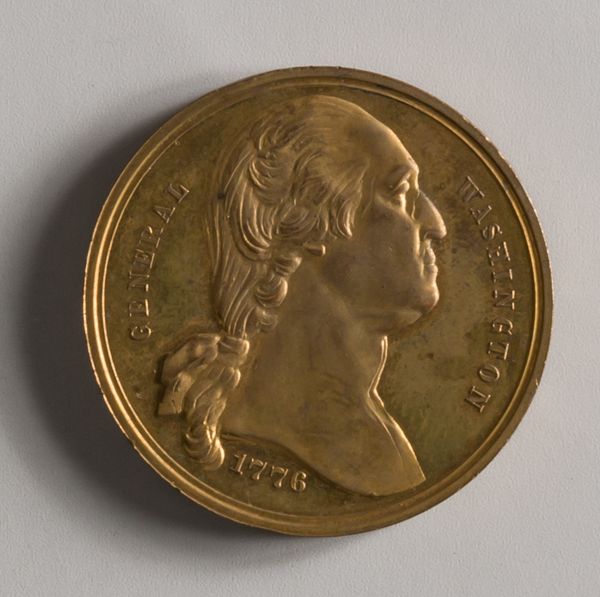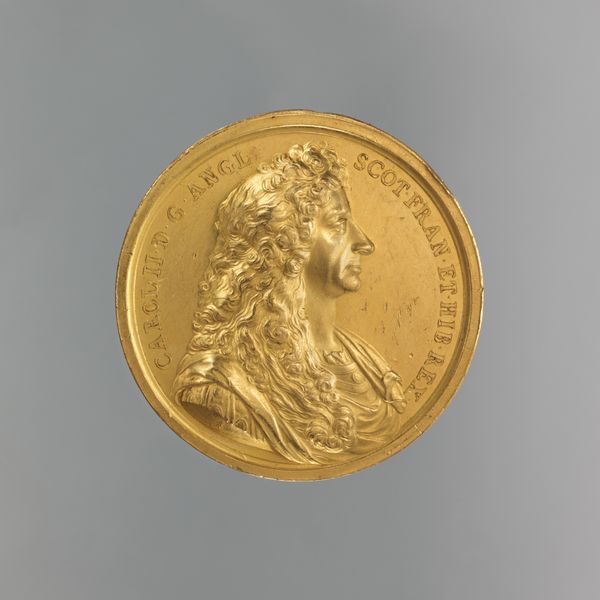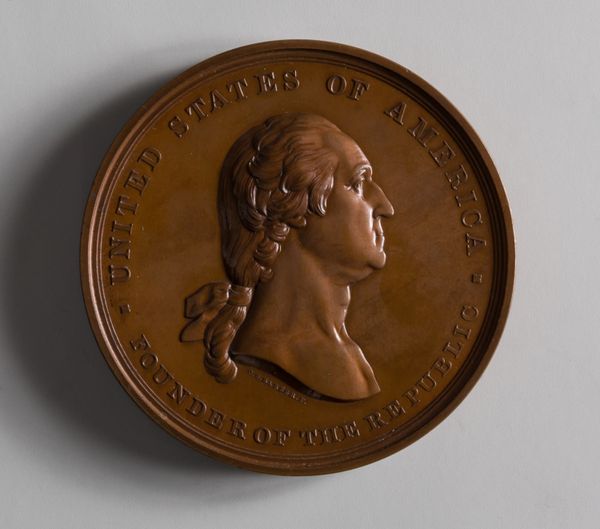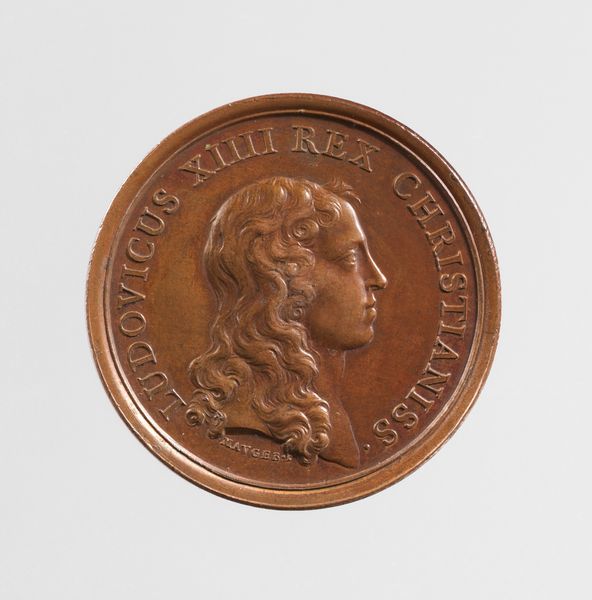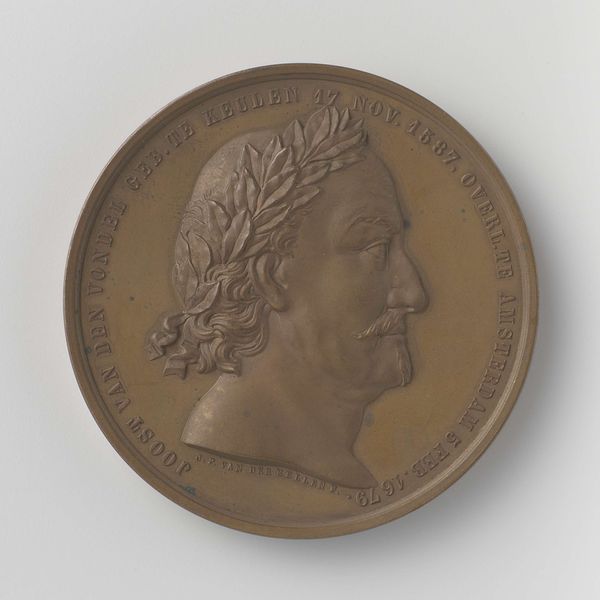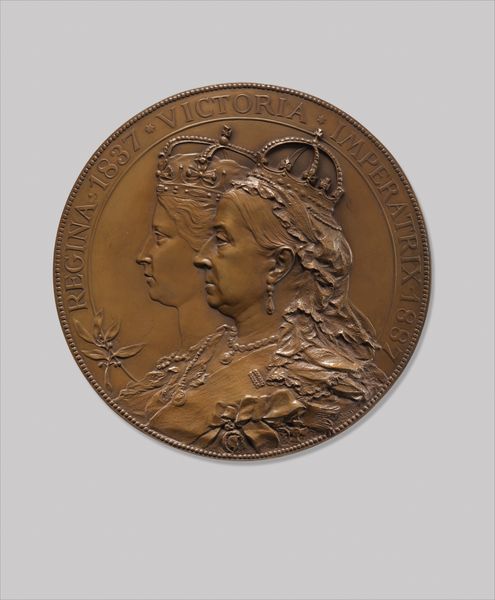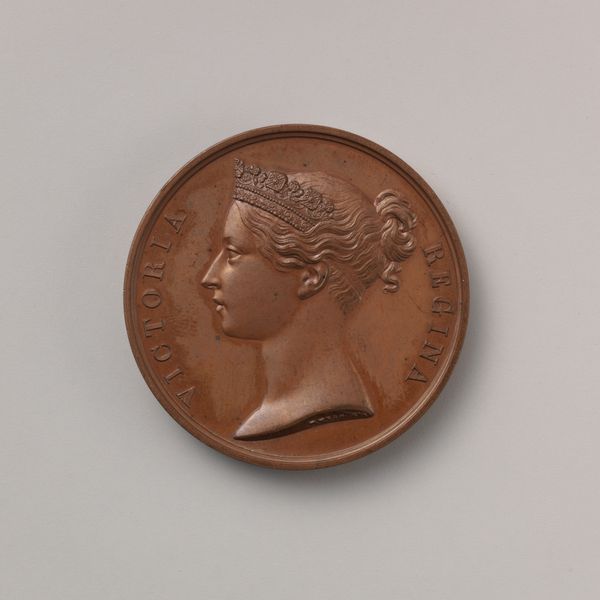
relief, bronze, sculpture
#
portrait
#
neoclacissism
#
relief
#
ancient-egyptian-art
#
bronze
#
sculpture
#
decorative-art
Dimensions: Diameter: 35 mm
Copyright: Public Domain
Editor: So this is "Conquest of Upper Egypt, 1798," a bronze relief by André Galle. It looks like a commemorative medal. It's so clean and precise, but there's something a bit… imperial about the subject matter given its creation during Napoleon's campaigns. What's your take on this, looking at it from a historical lens? Curator: You've hit on a crucial point. This piece isn't just about aesthetic beauty; it's deeply embedded in power dynamics. France, under Napoleon, was attempting to establish itself as a modern empire, consciously echoing the grandeur of past civilizations, particularly Egypt. This medal serves as propaganda, associating Napoleon's ambition with the historical legacy of the Pharaohs. How do you think the visual style contributes to that message? Editor: I guess the clean lines and the profile view—it reminds me of Roman coinage—makes it seem authoritative, solidifying France's claim? Like they are not just conquerors, but inheritors. Curator: Precisely! Neoclassicism here is deployed as a visual language of legitimacy. Galle is not just recording history; he's crafting a specific narrative. This work, meant for circulation, participated actively in constructing an image of France's role in the world. Notice how the inscription reinforces that authority. It doesn't mention the Egyptian people at all! Editor: It’s unsettling how something that looks so refined is actually promoting a pretty problematic agenda. Thinking about where it was displayed, who made it, and who it was made for really flips my understanding. I see it as much less 'art' and more 'artifact.' Curator: I agree, analyzing its political role unveils a whole new perspective. This highlights how artistic expression is fundamentally shaped by social forces and political ideologies.
Comments
No comments
Be the first to comment and join the conversation on the ultimate creative platform.
